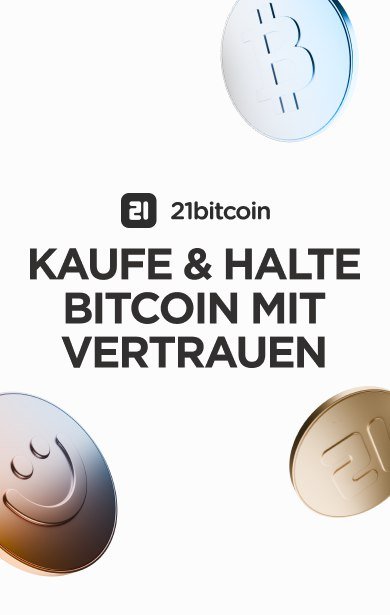In memory of Hal Finney
Today he would have been 68 years old
Harold Thomas Finney II, who died in August 2014, is considered a legend in the Bitcoin and crypto community and beyond. He was the first recipient of a Bitcoin transaction and many people suspect that he was also behind the pseudonym "Satoshi Nakamoto" and could therefore be the inventor of Bitcoin.
Today, "Hal", as he was known, would be celebrating his 68th birthday if his fateful life had taken a different course. In memory of him, we would like to draw attention to him and his work with this article.
Happy Birthday, Hal!
Hal Finney was born in California on May 4, 1956 and began working as a software developer after studying engineering at the California Institute of Technology. He initially developed video games as an employee and later as a freelancer.
However, as he had a particular interest in cryptography , he began working with the famous computer scientist Phil Zimmermann on the email encryption software Pretty Good Privacy (PGP). In fact, after Zimmermann, Hal Finney was one of the first employees at the PGP Corporation, which was founded in 1996, and worked there until his early retirement in 2011.
Illness & Death

This early retirement was due to a serious illness. When Finney was suddenly diagnosed with ALS syndrome (amyotrophic lateral sclerosis) in August 2009, the passionate sportsman and marathon runner's world collapsed.
Nevertheless, although he was already in a wheelchair and had to be fed via tubes, he continued to work tirelessly until his death, writing code and sharing clever thoughts with the world. Sadly, on August 28, 2014, his weakened body could no longer withstand the disease.
Finney died surrounded by his family and was subsequently cryonically preserved in accordance with his last wishes. He had his body frozen by a specialist company in the hope that one day in the distant future, researchers will be able to thaw him out and bring him back to life.
Cypherpunks
Through his work on PGP, Finney continued to refine his skills in the field of encryption technology over time and found his way into the so-called cypherpunk movement. Cypherpunks are a group of Internet activists who are committed to protecting individual privacy in virtual space.
Eventually, Hal Finney used his skills to program the first cryptographically based and anonymized email distribution list, which he operated for a while. Cypherpunk activists mainly communicated via such mailing lists and over the years some famous people, such as Julien Assange, Adam Back, Nick Szabo but also the pseudonymous Bitcoin inventor Satoshi Nakamoto, joined the mailing lists.
The cypherpunks repeatedly discussed the implementation of digital cash, as they already recognized at the time that it was essential for individual freedom to make anonymous and uncensorable money accessible in the virtual space. Concepts such as David Chaum's "DigiCash", Adam Back's "Hashcash" or Nick Szabo's "Bitgold" were all precursor concepts to Bitcoin, but unfortunately they all had minor or major weaknesses and were therefore never really able to meet the needs of the cypherpunks.
Hal Finney also made an attempt to create his own currency based on reusable proof of work (RPOW).
Hal & Bitcoin
When Satoshi Nakamoto finally presented his concept "Bitcoin: A Peer-to-Peer Electronic Cash System" via an e-mail distribution list in 2008, Hal Finney was one of the first people to learn about the concept and was immediately very enthusiastic. In a legendary tweet ("Running bitcoin") from 2009, Hal Finney told the world that he was the first person after Satoshi himself to run the Bitcoin software. That very day (American time) he was to become the recipient of the first Bitcoin transaction in history.
Running bitcoin-
halfin (@halfin) January 11, 2009
Over time, Finney became heavily involved in the debate surrounding Bitcoin and often had clever ideas, some of which were characterized by enormous foresight. As early as 2010, for example, he predicted that Bitcoin would have to be scaled via second-layer technologies such as the Lightning Network.
Bitcoin itself cannot scale in such a way that every single financial transaction in the world could be transferred to everyone and included in the blockchain. There needs to be a second layer of payment systems that is lighter and more efficient."
Hal Finney in 2010
In 2013, a few months before his death, Hal Finney published a kind of short Bitcoin biography entitled "Bitcoin and I" in a forum, which described his journey with the new cryptocurrency. Here is an interesting excerpt from it, which describes Hal's journey with Bitcoin well from his own perspective:
I thought I'd write about the last four years, which have been an eventful time for Bitcoin and me. For those who don't know me, I'm Hal Finney. I took my first steps in the crypto industry working on an early version of PGP, in close collaboration with Phil Zimmermann. When Phil decided to start PGP Corporation, I was one of the first people hired. I worked on PGP until I retired. At the same time, I was involved with the Cypherpunks. Among other activities, I ran the first cryptographic-based anonymous remailer. Let's move on to the end of 2008 and the announcement of Bitcoin. I noticed that crypto graybeards (I was in my mid-50s) tend to get cynical. I was more idealistic; I always loved cryptocurrencies, the mystery and paradox of it. When Satoshi announced Bitcoin on the crypto mailing list, it was met with skepticism at best. Cryptographers have seen too many grand schemes from clueless amateurs. They tend to have a knee-jerk reaction. I was more positive. I had been interested in cryptographic payment systems for a long time. I had also been fortunate enough to meet and correspond extensively with both Wei Dai and Nick Szabo, who are widely known to have developed ideas that are being implemented with Bitcoin. I had made an attempt to create my own proof-of-work based currency called RPOW. So I found Bitcoin fascinating. When Satoshi announced the first version of the software, I grabbed it immediately. I think I was the first person besides Satoshi to run Bitcoin. I mined block 70 or so and I was the recipient of the first Bitcoin transaction when Satoshi sent me ten coins as a test. Over the next few days, I had an email conversation with Satoshi, mostly reporting bugs, which he then fixed. Today, Satoshi's true identity is a mystery. But at the time I thought I was dealing with a young man of Japanese descent who was very intelligent and sincere. I've been lucky enough to meet many brilliant people in my life, so I recognize the signs. After a few days, Bitcoin was pretty stable, so I let it run. Those were the days when the difficulty was 1 and you could find blocks with a CPU, not even a GPU. Over the next few days, I mined several blocks. But I turned it off because my computer was getting too hot and the fan noise was bothering me. In hindsight, I wish I had lasted longer, but then again, I was extraordinarily lucky to be there at the beginning. It's a glass half full, half empty thing. The next time I heard about Bitcoin was in late 2010, when I was surprised to realize that not only was it going on, but that Bitcoins actually had monetary value. I dusted off my old wallet and was relieved to find that my bitcoins were still in it. When the price went up to real money, I transferred the coins to an offline wallet, where I hope they will be worth something to my heirs.
Hal Finney in 2013
Was Hal Finney Satoshi?
Over time, due to Finney's involvement in the early days of Bitcoin history, it has been claimed that he himself was Satoshi. Among other things, the coincidence (?) that a certain Mr. "Dorian Prentice Satoshi Nakamoto" lived in Hal Finney's immediate neighbourhood at the time of Bitcoin's development is seen by many people as a strong indication or even proof that the pseudonym "Satoshi Nakamoto" is just an alter ego of Hal Finney.
However, he himself vehemently denied throughout his life that he was Satoshi.
Roman has already gone into more detail about Hal Finney and the theory that he was Satoshi in two videos:
Obituary
It is completely irrelevant whether Hal Finney was Satoshi Nakamoto or not. This does not detract from the fact that he was a pioneer of email encryption and Bitcoin history. For Bitcoin, too, it doesn't matter who Satsohi was or wasn't.
Without Hal Finney's proactive involvement, Bitcoin might never be where it is today. As the recipient of the first Bitcoin transaction, he has become part of the history of a network that is slowly and steadily winning over the entire world.
We hope that it will rest in peace and that one day its dream will come true and technology will be able to free it from its icy slumber.






